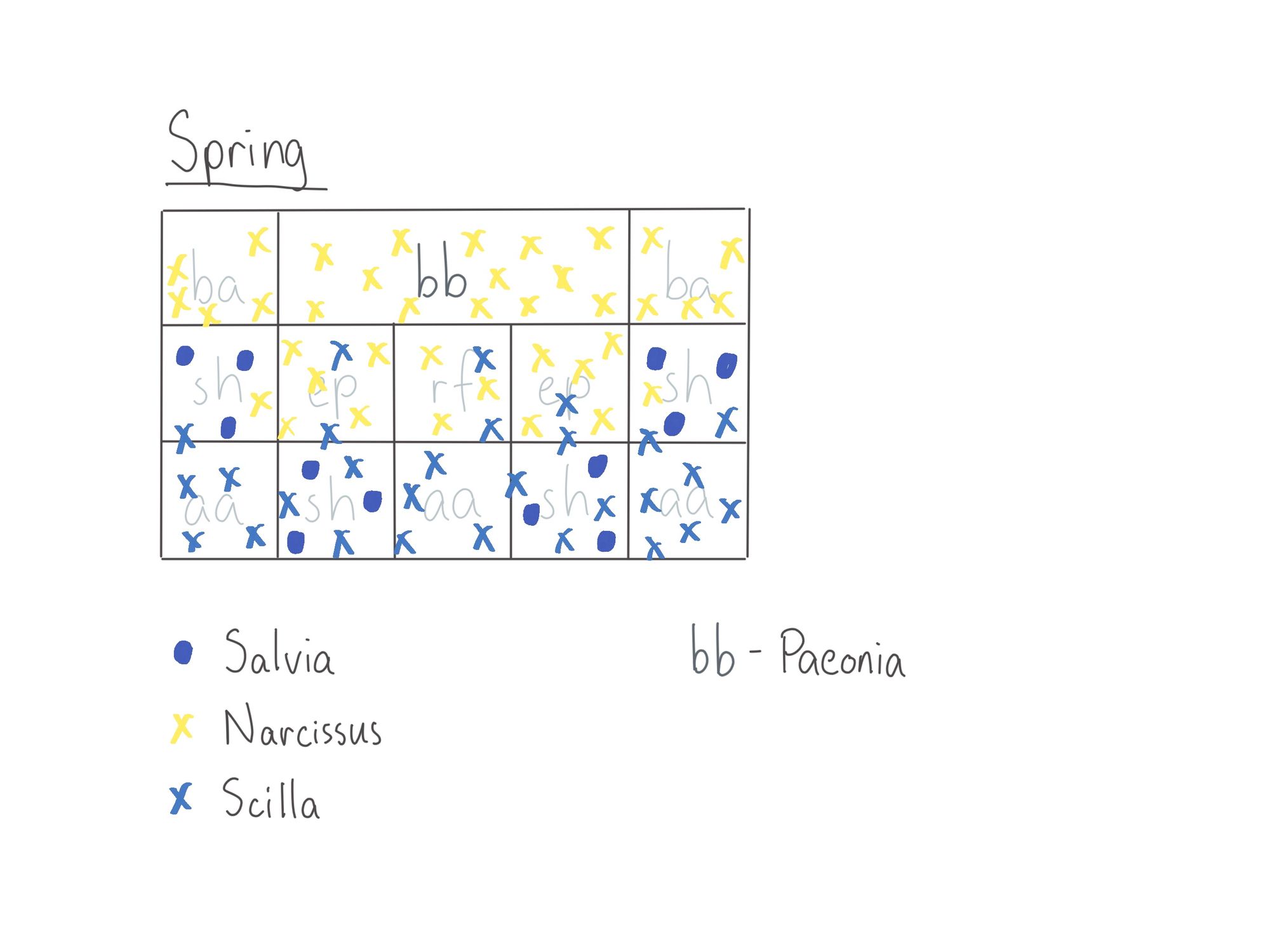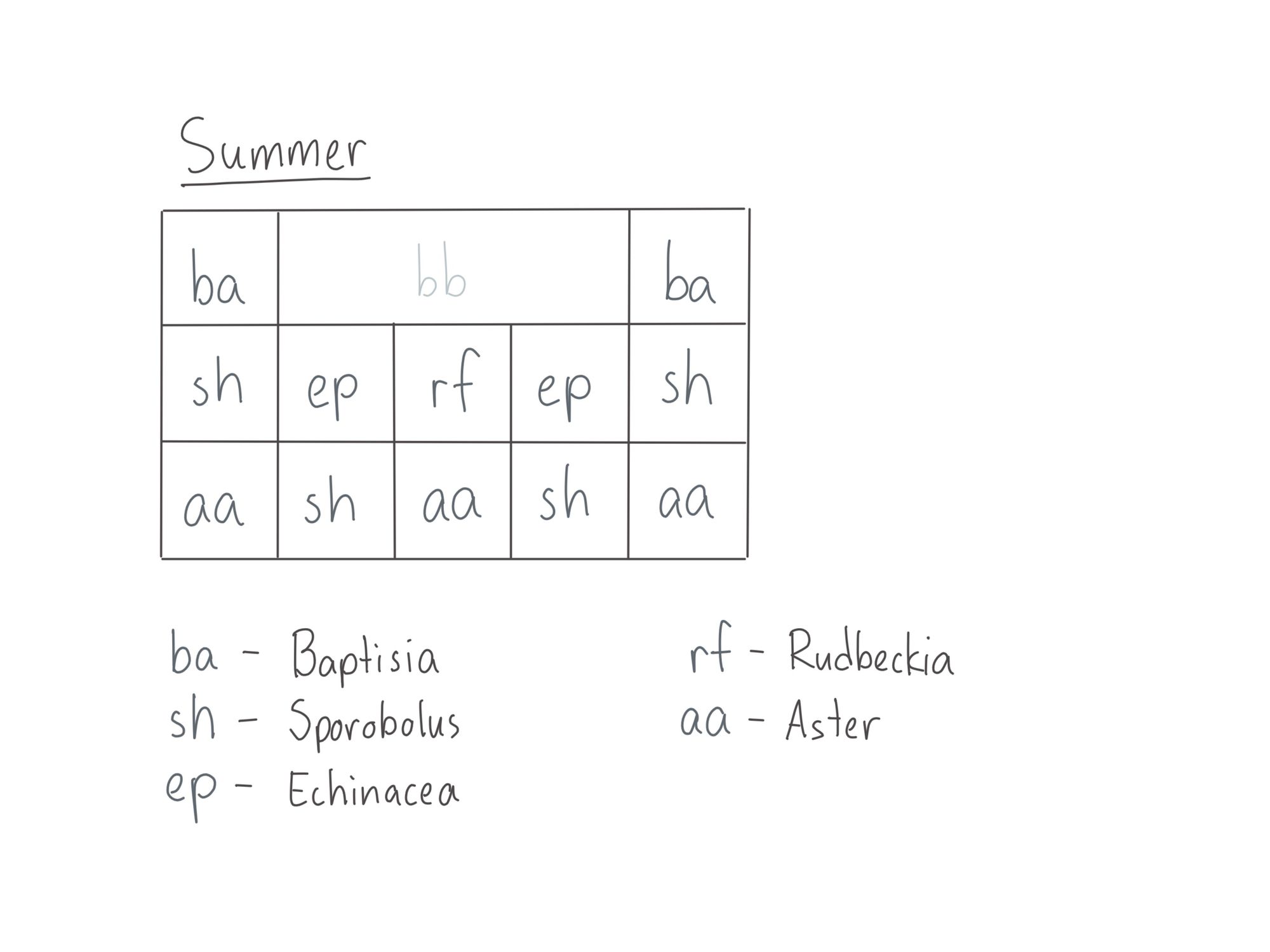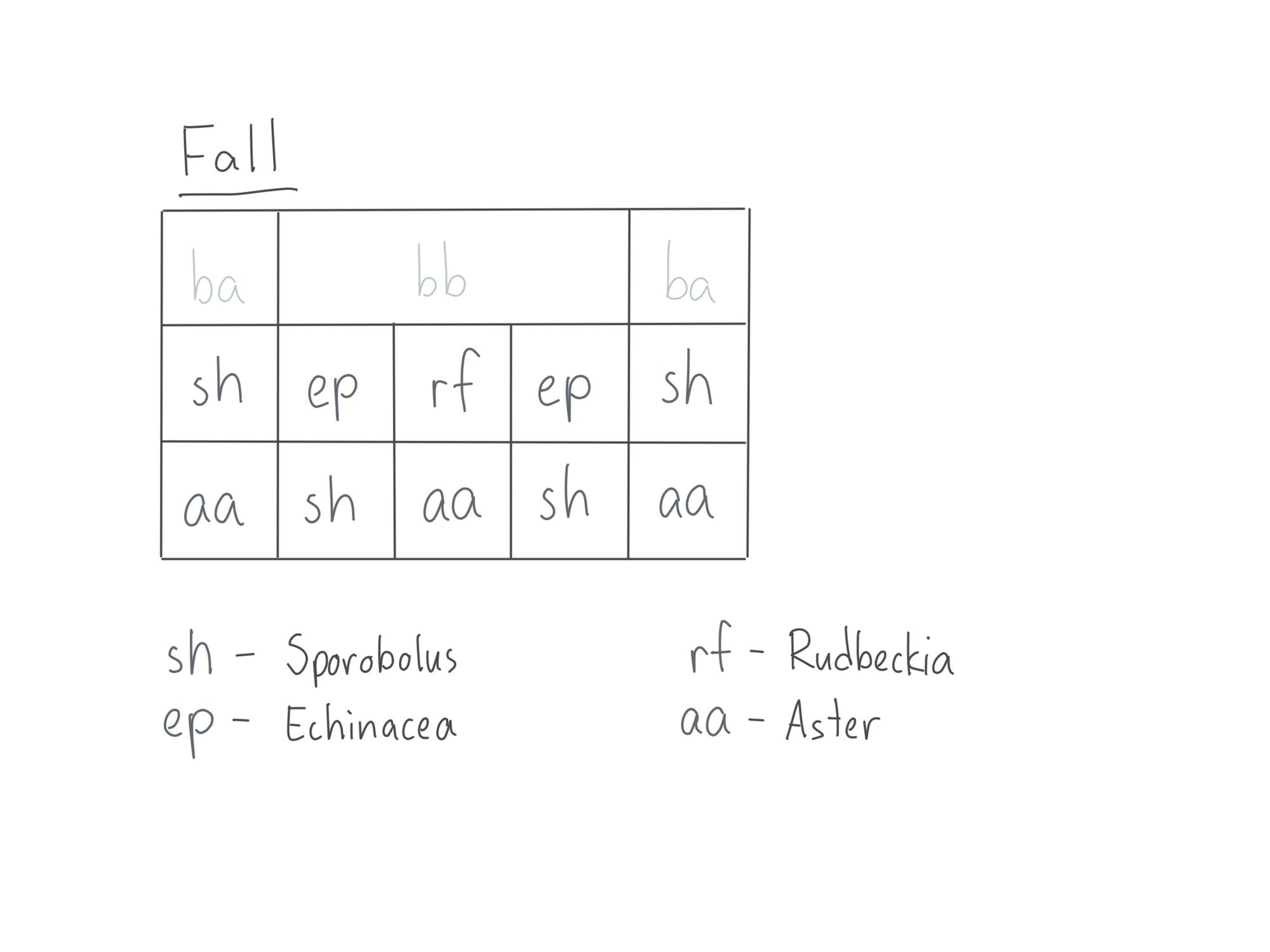I wanted to start with an example of what I was talking about at the end of the previous newsletter. The idea is to begin with a matrix planting (a very small one, anyways) and intersperse primary and scatter plants into that matrix. For this recipe, I am envisioning a foundation bed next to a home’s main entrance that is 5m x 3m in size. The hypothetical space is in full sun and has a zone 3 hardiness.
Ingredients:
Matrix plant
Sporobolus heterolepis (Prairie Dropseed)
- warm season grass; zone 3
Primary plants
Aster novae-angliae ‘Purple Dome’ (Purple Dome New England Aster)
- purple flowers from summer to fall; zone 2
Baptisia australis (Blue False Indigo)
- blue flowers in summer; zone 2
Echinacea purpurea ‘Magnus’ (Magnus Coneflower)
- pink flowers from summer to fall; zone 3
Paeonia ‘Bowl of Beauty’ (Bowl of Beauty Peony)
- pink flowers in late spring; zone 3
Rudbeckia fulgida ‘Goldsturm’ (Black-eyed Susan)
- yellow flowers from summer to fall; zone 3
Scatter plants
Salvia nemorosa ‘Blue Hill’ (‘Blauhuegel’) (Blue Hill Meadow Sage)
- purple flowers from late spring to early summer; zone 3
Narcissus poeticus var. recurvus (Daffodil)
- white flowers with a yellow cup in spring; zone 3
Scilla siberica (Siberian Squall)
- blue flowers in spring; zone 2
Seasons:
Working with scatter plants affords some creativity in the selection process as you focus more on how the plants grow through spring, summer, and fall instead of when they flower and their specific colours.

The main draw in early spring are the bulbs and the perennials that will ultimately flower sometime in spring or early summer. Personally, I really enjoy the delicate textures of perennials as they first sprout up (for example: Paeonia). The reliance on bulbs is also deliberate as spring in a northern climate often comes quickly and ends abruptly. This doesn’t give a lot of breathing room for spring perennials to be enjoyed. To me, spring is more like jumping into a cold lake after sitting in a hot sauna - you get used to the drab and dirty feeling of late winter and then, suddenly, the intense colour from different bulbs shocks your system out of its slumber. It’s quick and full of energy.
As spring progresses, the early flowering perennials carry on where the bulbs left off (in this case, Salvia and Paeonia). As an aside, try to leave the bulbs alone until their foliage starts to yellow (when they go dormant). You can clean up the spent flowers, but don’t touch the leaves as they are gathering the energy the bulbs need to flower next year.

Most of the perennials should be well on their way by this point, but one in particular will be a little behind: Sporobolus heterolepis. This is because it is a warm season grass, which means it only starts growing when the temperatures are warm enough. This affords us another opportunity to use something as a scatter plant (Salvia nemorosa). Its purpose is to add some weight and interest next to where Sporobolus heterolepis will be growing. By the time the Salvia is done flowering in early summer, Sporobolus should be growing well for its main showing in late summer and early fall.

This is honestly my favourite time of year as it carries a relaxed hue while still bringing some excitement and positive energy. But the key is you have to stop yourself to see this subtlety instead of lamenting about the loss of warmer temperatures. Sporobolus loves the light at this time of year as the sun starts to lower in the sky. Aster, Echinacea, and Rudbeckia add a splash of colour, while seed pods become more important visually as each perennial becomes dormant. Don’t rush out to clean up your garden before winter! Leaving it until early spring will provide interest in the early winter months.
Overall, this small number of plants provides wonderful interest and impact in a small space and carries that energy through most of the year.